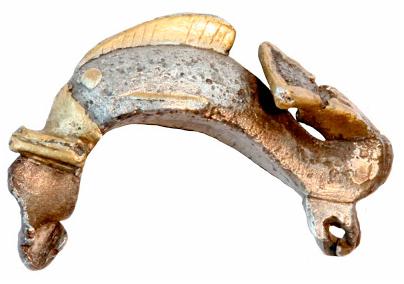Amateur treasure hunters in Britain unearthed 25,000 Roman artefacts in 2012.
Armed with metal detectors, the treasure hunters in England and Wales found mostly coins dating to 2,000 years ago, when the Romans ruled the Britain. Their finds have been documented as part of the Portable Antiquities Scheme.
Among the most spectacular finds is a copper alloy bust of a bare-chested young man thought to be that of a male lover of the Roman Emperor Hadrian, Antinous. When Antinous drowned in the Nile, Egypt in 130, the grieving emperor ordered he be deified – a process previously reserved for imperial family members – and statues of Antinous were erected across the Roman Empire. Another notable find is a three-dimensional silver, gold-gilded brooch in the shape of a leaping dolphin.
Perhaps the most unusual finds are some pieces of erotic art: an animal bone carved into a penis shape with wings, and a copper-alloy knife handle in the shape of a couple making love. Erotic art was not unusual in Roman times and lecturer in archaeology at King’s College, London, Dr John Pearce, told the journal ‘Live Science’: “One theory is that those scenes that show sexual activity have an apotropaic power, because they make you laugh so that wards off the evil eye.”
Amateurs are permitted to use metal detectors to uncover artefacts in England and Wales and – depending on the nature of their finds – potentially own them. The Portable Antiquities Scheme is funded by the Department for Culture, Media and Sport. It encourages the voluntary recording of archaeological objects found by members of the public in England and Wales. Every year many thousands of objects are discovered, many of them by people with metal detectors, but also by people out walking, gardening or going about their daily work.









